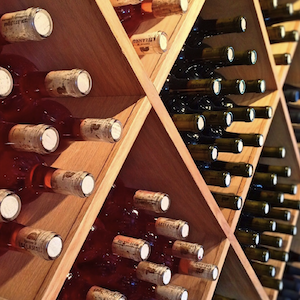Evaluation of energy savings in white winemaking: impact of temperature management combined with specific yeasts choice on required heat dissipation during industrial-scale fermentation

Published: 12 May 2023
Abstract Views: 1185
PDF: 412
Supplementary Materials: 51
HTML: 12
Supplementary Materials: 51
HTML: 12
Publisher's note
All claims expressed in this article are solely those of the authors and do not necessarily represent those of their affiliated organizations, or those of the publisher, the editors and the reviewers. Any product that may be evaluated in this article or claim that may be made by its manufacturer is not guaranteed or endorsed by the publisher.
All claims expressed in this article are solely those of the authors and do not necessarily represent those of their affiliated organizations, or those of the publisher, the editors and the reviewers. Any product that may be evaluated in this article or claim that may be made by its manufacturer is not guaranteed or endorsed by the publisher.
Similar Articles
- Alessio Tugnolo, Roberto Beghi, Valentina Giovenzana, Alessia Pampuri, Simone Virginio Marai, Andrea Casson, Enrico Ferrari, Riccardo Guidetti, Testing of ultrasonic vibration to speed up the remuage operation in sparkling wine production , Journal of Agricultural Engineering: Vol. 55 No. 2 (2024)
- Valentina Giovenzana, Alessandra Fusi, Roberto Beghi, Riccardo Guidetti, Energy analysis to assess the environmental sustainability of the dairy chain , Journal of Agricultural Engineering: Vol. 43 No. 3 (2012)
- Evelia Schettini, Giovanni Puglisi, Fabiana Convertino, Fernando Antonio Cancellara, Giuliano Vox, Greenhouse localized heating powered by a polygeneration system , Journal of Agricultural Engineering: Vol. 52 No. 3 (2021)
- Alvaro Marucci, Danilo Monarca, Massimo Cecchini, Andrea Colantoni, Andrea Cappuccini, Analysis of internal shading degree to a prototype of dynamics photovoltaic greenhouse through simulation software , Journal of Agricultural Engineering: Vol. 46 No. 4 (2015)
- Daniele Duca, Giuseppe Toscano, Ester Foppa Pedretti, Giovanni Riva, Sustainability of sunflower cultivation for biodiesel production in central Italy according to the Renewable Energy Directive methodology , Journal of Agricultural Engineering: Vol. 44 No. 4 (2013)
- Maria Elena Menconi, Massimo Chiappini, Jan L.M. Hensen, David Grohmann, Thermal comfort optimisation of vernacular rural buildings: passive solutions to retrofit a typical farmhouse in central Italy , Journal of Agricultural Engineering: Vol. 48 No. 3 (2017)
- Alexandros Sotirios Anifantis, Simone Pascuzzi, Giacomo Scarascia-Mugnozza, Geothermal source heat pump performance for a greenhouse heating system: an experimental study , Journal of Agricultural Engineering: Vol. 47 No. 3 (2016)
- Roberto Fanigliulo, Marcello Biocca, Daniele Pochi, Effects of six primary tillage implements on energy inputs and residue cover in Central Italy , Journal of Agricultural Engineering: Vol. 47 No. 3 (2016)
- Jacopo Bacenetti, Sara González-García, Aira Mena, Marco Fiala, Life cycle assessment: an application to poplar for energy cultivated in Italy , Journal of Agricultural Engineering: Vol. 43 No. 2 (2012)
- Ileana Blanco, Simone Pascuzzi, Alexandros Sotirios Anifantis, Giacomo Scarascia-Mugnozza, Study of a pilot photovoltaic-electrolyser-fuel cell power system for a geothermal heat pump heated greenhouse and evaluation of the electrolyser efficiency and operational mode , Journal of Agricultural Engineering: Vol. 45 No. 3 (2014)
<< < 1 2 3 4 5 6 7 8 9 10 > >>
You may also start an advanced similarity search for this article.

 https://doi.org/10.4081/jae.2023.1523
https://doi.org/10.4081/jae.2023.1523







